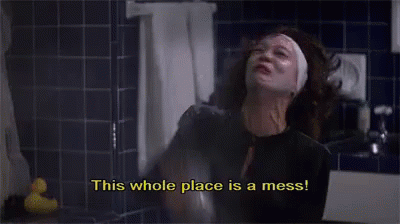Every time you open your cupboard, is it almost like a time machine showcasing all your things from 2005 that you really don’t need anymore? A pile of cardboard boxes, old teeshirts, books that you don’t read anymore and unwanted pens stashed in a corner– it’s not wrong to love a good mess, but it may be time to part ways with space-consuming, unwanted things that take up mindless area. Many of us are mild hoarders, but if it starts to affect your lifestyle, it’s time to peep into the issue.
Although it’s best to seek professional diagnosis, in severe cases, hoarding is terrible just because of practicality, safety, and hygiene. In this instance, it a simple case of wellbeing. Clutter ties us to the past and prevents us from moving forward, resulting in emotional chaos.
Hoarding is a tendency some people are born with. While it is not seen as much of an issue, “hoarding disorder” is categorized in the latest edition of the American Psychiatric Association’s Diagnostic and Statistical Manual of Mental Disorders (DSM-5) as a disorder related to OCD. The ASA defines hoarding disorder as “is characterized by the persistent difficulty discarding or parting with possessions, regardless of the value others may attribute to these possessions.”
An environment that promotes harmony, clarity, and freedom brings out the best in us and affords us the time and energy to focus on what matters.
However, once you recognize that you are a hoarder, you already have a better chance to change your behaviour than the much more significant proportion of hoarders who cannot see their behaviour as hoarding.

Here are a few ways to jumpstart your journey to stop hoarding. From spending more time outdoors to the process of actually separating things you need from what you don’t, we have it all here.
Go to different places: Before starting your organization process, alter your routine of the areas you visit. Instead of the places, you’re comfortable going to collect and buy more stuff to hoard, try going to another location.
Every time you think of going to your usual collecting places, go to that other place instead, i.e., beach, hiking trail, coffee shop. If you don’t go into the store and browse around, you won’t see something you might *need* to take home.
Spend time outside: Overall, spend more time outside rather than staying inside your house/ room. It makes you realize how not so significant the hoard is when you spend time away from it.
Take it slow: Your first step to organizing all your hoard is to take things slow. DO NOT throw everything out at once. As a hoarder, you will have sentimental value with some of the items, which will result in regret, and possibly, anxiety. Instead, start with one category or collection at a time, whether it be your jewellery collection or your collection of bed sheets.
Color-code: Once you’ve made up your mind on where to start, colour-code your items based on how badly you need the item. It could be red for things you are sure about giving away and green for what you choose to keep. If you cannot decide to toss or hold an item, put it in a box for six months. If you don’t open the package before then, you can let it go without regret.
Sell instead of throw: Lastly, consider consignment. If you start to sell or give away your items in a personal manner, it has the chance to make you feel better. For instance, when selling items on Depop, Etsy, or Craigslist, dropping off things or people collecting them assures you that the items will be valued. It will be in the hands of someone that will need it and use it more than you did. Alternatively, you have now made a different story for the item, creating a different sentiment attached to the article.


